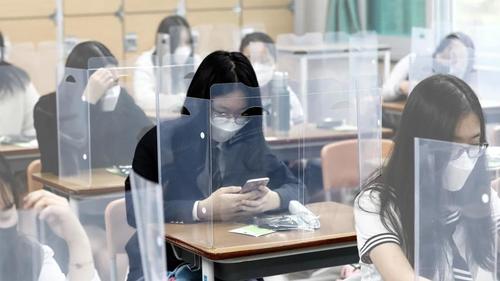You know those plastic Covid-19 barriers which sprung up everywhere to physically separate us for the past 18 months? It turns out they probably don’t help, and may make things worse.
In short, what may work for droplets does not work on an aerosolized virus.
According to the New York Times, "scientists who study aerosols, air flow and ventilation say that much of the time, the barriers don’t help and probably give people a false sense of security. And sometimes the barriers can make things worse."
In addition to stifling airflow and ventilation, the barriers can deflect germs to innocent bystanders such as another worker or customer.
Under normal conditions in stores, classrooms and offices, exhaled breath particles disperse, carried by air currents and, depending on the ventilation system, are replaced by fresh air roughly every 15 to 30 minutes. But erecting plastic barriers can change air flow in a room, disrupt normal ventilation and create “dead zones,” where viral aerosol particles can build up and become highly concentrated. -NYT
"If you have a forest of barriers in a classroom, it’s going to interfere with proper ventilation of that room," said Virginia Tech professor of civil and environmental engineering, Linsey Marr. "Everybody’s aerosols are going to be trapped and stuck there and building up, and they will end up spreading beyond your own desk."
That said, there are 'some situations’ in which the clear shields might be protective - as they can stop wet sneezes from splattering on others, but Covid-19 is largely spread via aerosol transmission - which laughs at plastic barriers (and masks alike).
A study published in June and led by researchers from Johns Hopkins, for example, showed that desk screens in classrooms were associated with an increased risk of coronavirus infection. In a Massachusetts school district, researchers found that plexiglass dividers with side walls in the main office were impeding air flow. A study looking at schools in Georgia found that desk barriers had little effect on the spread of the coronavirus compared with ventilation improvements and masking.
Before the pandemic, a study published in 2014 found that office cubicle dividers were among the factors that may have contributed to disease transmission during a tuberculosis outbreak in Australia.
British researchers have conducted modeling studies simulating what happens when a person on one side of a barrier — like a customer in a store — exhales particles while speaking or coughing under various ventilation conditions. The screen is more effective when the person coughs, because the larger particles have greater momentum and hit the barrier. But when a person speaks, the screen doesn’t trap the exhaled particles — which just float around it. While the store clerk may avoid an immediate and direct hit, the particles are still in the room, posing a risk to the clerk and others who may inhale the contaminated air. -NYT
"We have shown this effect of blocking larger particles, but also that the smaller aerosols travel over the screen and become mixed in the room air within about five minutes," said University of Leeds professor of environmental engineering for buildings, Catherine Noakes. "This means if people are interacting for more than a few minutes, they would likely be exposed to the virus regardless of the screen."
According to a 2013 study conducted by Noakes on the effect of partitions between hospital beds, while some people were protected from germs, the plastic barriers funneled the air towards other people in the room. She says that most screens she’s seen are "poorly positioned and are unlikely to be of much benefit."
"I think this may be a particular problem in places like classrooms where people are present for longer periods of time," Noakes continued. "Large numbers of individual screens impede the airflow and create pockets of higher and lower risk that are hard to identify."
One has to wonder, what else isn’t working right now?
According to Dr. Marr of VT, "One way to think about plastic barriers is that they are good for blocking things like spitballs but ineffective for things like cigarette smoke," adding "The smoke simply drifts around them, so they will give the person on the other side a little more time before being exposed to the smoke. Meanwhile, people on the same side with the smoker will be exposed to more smoke, since the barriers trap it on that side until it has a chance to mix throughout the space."
Those who may be at least partially protected by a plastic barrier include bus drivers, bank cashiers, or doctor’s office clerks, whose barriers are often substantial.
"If there are aerosol particles in the classroom air, those shields around students won’t protect them," said UC Davis incoming dean of engineering, Richard Corsi. "Depending on the air flow conditions in the room, you can get a downdraft into those little spaces that you’re now confined in and cause particles to concentrate in your space."
The problem, experts say, is that most people in charge of erecting barriers in offices, restaurants, nail salons and schools are not doing so with the assistance of engineering experts who can evaluate air flow and ventilation for each room. -NYT
"Air flow in rooms is pretty complicated," said Corsi. "Every room is different in terms of the arrangement of the furniture, the height of the walls and ceilings, the vents, where the book shelves are. All of these things have a huge impact on the actual flow and air distribution in a room because every classroom or office space is different."











